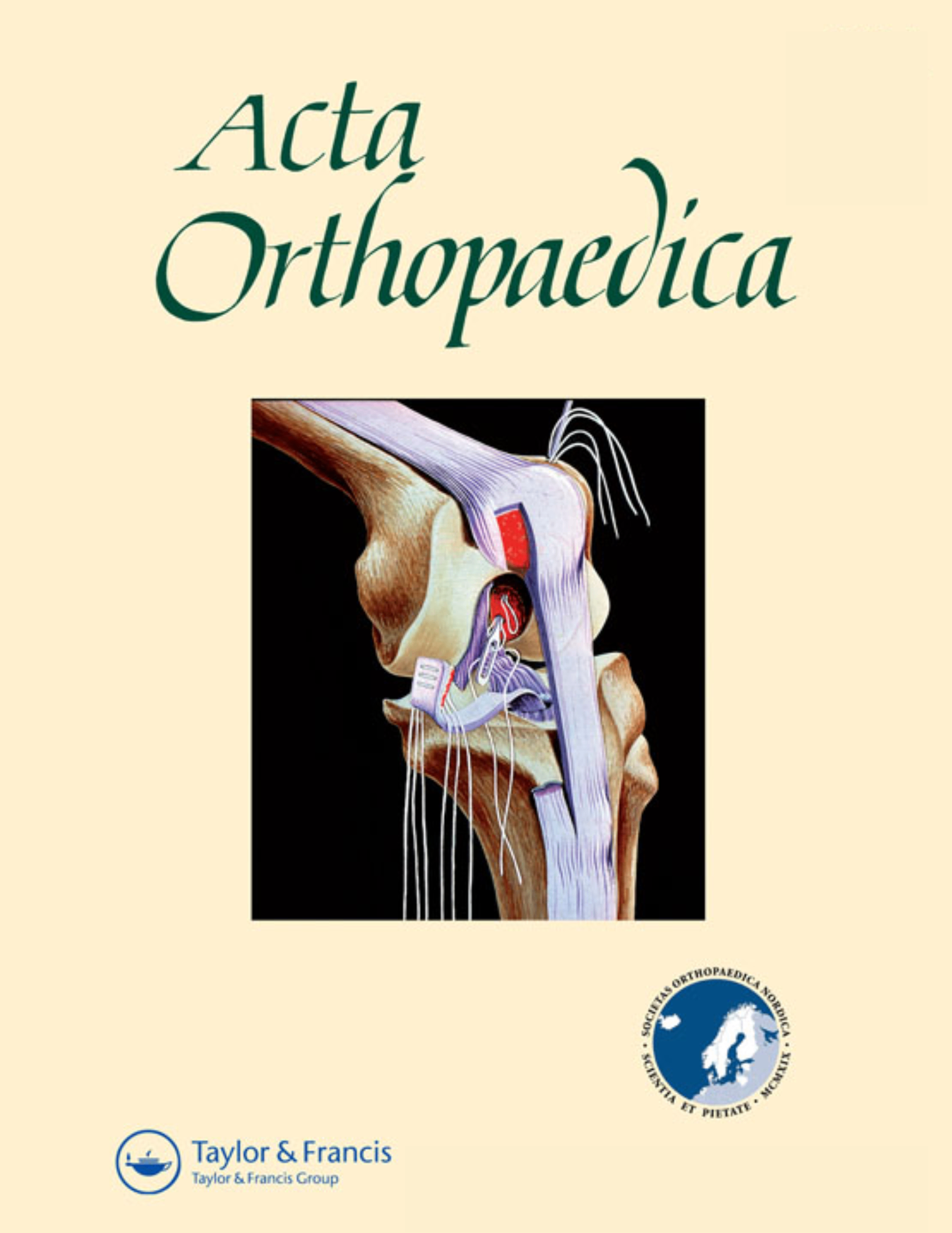
Surgical treatment of distal radius fractures: Internal fixation versus external fixation

Surgical treatment of distal radius fractures: Internal fixation versus external fixation
Comparison of internal and external fixation of distal radius fractures
Acta Orthop. 2013 Jun;84(3):286-91. doi: 10.3109/17453674.2013.792029. Epub 2013 Apr 18Did you know you're eligible to earn 0.5 CME credits for reading this report? Click Here
Synopsis
10 randomized controlled trials (RCTs) consisting of 715 patients with 772 distal radius fractures were evaluated to determine whether surgical treatment using external fixation (EF) or internal fixation (IF) provided better outcomes. Results indicated that patients undergoing IF had significantly better Disabilities of the Arm, Shoulder and Hand (DASH) at 12 months compared to the EF group. IF also resulted in superior volar tilt at 12 months, and fewer minor complications compared to EF. Independent analysis of a sub-group of RCTs using volar locking plates indicated a significantly better DASH scores at 3 and 6 months compared to EF, however, this was lost at 12 months. Independent analysis also indicated that volar locking plates provided improved grip strength at 3 months, however this was not maintained at later follow-ups.
Were the search methods used to find evidence (original research) on the primary question or questions stated?
Was the search for evidence reasonably comprehensive?
Were the criteria used for deciding which studies to include in the overview reported?
Was the bias in the selection of studies avoided?
Were the criteria used for assessing the validity of the included studies reported?
Was the validity of all of the studies referred to in the text assessed with use of appropriate criteria (either in selecting the studies for inclusion or in analyzing the studies that were cited)?
Were the methods used to combine the findings of the relevant studies (to reach a conclusion) reported?
Were the findings of the relevant studies combined appropriately relative to the primary question that the overview addresses?
Were the conclusions made by the author or authors supported by the data and or analysis reported in the overview?
How would you rate the scientific quality of this evidence?
Yes = 1
Uncertain = 0.5
Not Relevant = 0
No = 0
The Reporting Criteria Assessment evaluates the transparency with which authors report the methodological and trial characteristics of the trial within the publication. The assessment is divided into five categories which are presented below.
4/4
Introduction
4/4
Accessing Data
4/4
Analysing Data
4/4
Results
3/4
Discussion
Detsky AS, Naylor CD, O'Rourke K, McGeer AJ, L'Abbé KA. J Clin Epidemiol. 1992;45:255-65
The Fragility Index is a tool that aids in the interpretation of significant findings, providing a measure of strength for a result. The Fragility Index represents the number of consecutive events that need to be added to a dichotomous outcome to make the finding no longer significant. A small number represents a weaker finding and a large number represents a stronger finding.
Why was this study needed now?
Distal radius fractures may be surgically treated with either internal fixation (IF) or external fixation (EF). However, there is debate over which of these two treatments provides better outcomes. Although there have been several randomized controlled trials (RCT) conducted comparing the impact of EF and IF on patients with distal radius fractures, results have been mostly inconclusive due to small sample sizes. Therefore, this meta-analysis aimed to compare the impacts of IF and EF surgical treatments in patients with distal radius fractures.
What was the principal research question?
Which surgical treatment method - internal or external fixation - provides better outcomes to patients with distal radius fractures after a minimum of one year?
What were the important findings?
- 10 RCTs consisting of 715 patients with 772 distal radius fractures were included in this meta-analysis. Bridging fixators with supplementary K-wires were used for EF in 9 studies, while 1 used only bridging fixators. 4 studies used IF with volar locking plates, while the other 6 used non-locking plates.
- Pooled results of 5 studies measuring the Disabilities of the Arm, Shoulder and Hand (DASH) scores in patients found a significant difference favouring the IF group at 12 months following surgery, but not at 3 and 6 months. However, when pooling DASH scores from 4 studies comparing IF with only volar locking plates and EF there was a significant difference between groups, favouring IF with volar locking plates, at 3 months (WMD: 14.3; 95% CI: 7-22; p<0.001) and 6 months (WMD: 6.2; 95% CI: 3-9; p<0.001), but not at 12 months (WMD: 6.1; 95% CI: -0.7 to 13; p=0.08).
- Grip strength analysis using 6 to 8 studies indicated there was no significant difference between the EF and IF groups at 3, 6, and 12 months. However, 3 studies comparing IF with only volar locking plates and EF indicated that grip strength was significantly better at 3 months with IF, than EF (WMD: -14; 95% CI: -25 to -3; p=0. 01. At 6 and 12 months, there were no significant differences between the groups (p=0.8 for both).
- Wrist and forearm ROM data from 8 studies was pooled and results indicated that there was a significant difference in supination between groups in favour of IF at 3 months only (WMD: -11; 95% CI: -16 to -7; p<0.001). 3 to 4 studies comparing IF with only volar locking plates and EF indicated that at 3 months extension was significantly better in the IF group at 3 months and that flexion was significantly better in the IF group at 6 months.
- 2 studies comparing IF with only volar locking plates and EF indicated that volar tilt significantly favoured the IF group at 12 months (WMD: -4.7; 95% CI: -7 to -2; p<0.001), while radial length significantly favoured the EF group at 12 months (WMD: 1.0; 95% CI: 0.1 to 2; p<0.03).
- 9 studies on patients with 728 fractures indicated that total surgical complication did not differ significantly between the IF and EF groups (RR: 1.2; 95% CI: 0.87-1.7; p=0.3). There were significantly fewer minor complications (included transient extensor tendon irritation, superficial infections, and finger stiffness) in the IF group compared to the EF group (RR: 3.6; 95% CI: 2.0-6.7; p<0.001), but no significant differences existed between the 2 groups in regard to major complications (included loss of reduction, malunion, and nonunion as well as deep infection, neuropathy, and tendon rupture) (RR: 0.79; 95% CI: 0.55-1.2; p=0.02). These findings were reflected when IF with only volar locking plates and EF groups were compared for total complications (p=0.5), minor complications (p=0.06), and major complications (p=0.7).
What should I remember most?
The results from this meta-analysis exhibited that overall, internal fixation was superior to external fixation in the surgical treatment of distal radius fractures. More specifically, internal fixation produced significantly better DASH scores at 12 months, volar tilt at 12 months, and fewer minor complications in comparison to patients who underwent external fixation. Independent analysis of internal fixation with volar locking plates indicated better DASH scores at 3 and 6 months, and grip strength at 3 months compared to external fixation.
How will this affect the care of my patients?
Overall, it appears surgical treatment using internal fixation for distal radius fractures may potentially lead to superior results at 1 year. Future research should consider comparing different types of internal fixators and further assessments in comparison to external fixation.
Learn about our AI Driven
High Impact Search Feature
Our AI driven High Impact metric calculates the impact an article will have by considering both the publishing journal and the content of the article itself. Built using the latest advances in natural language processing, OE High Impact predicts an article’s future number of citations better than impact factor alone.
Continue



 LOGIN
LOGIN

Join the Conversation
Please Login or Join to leave comments.